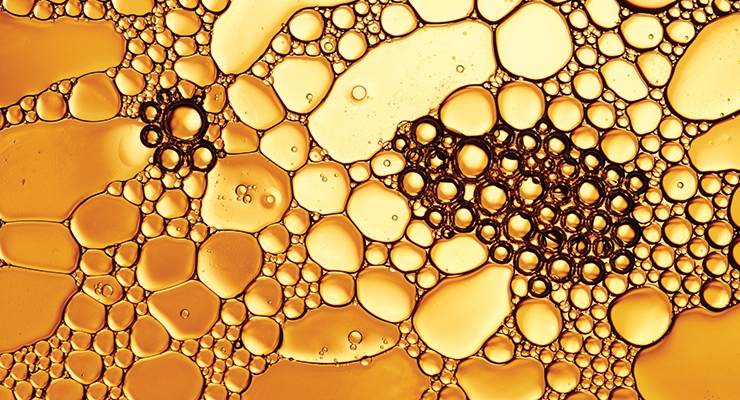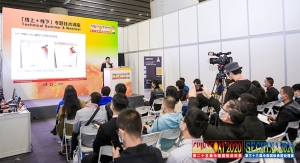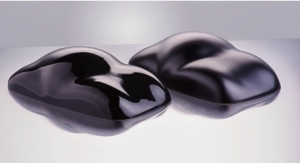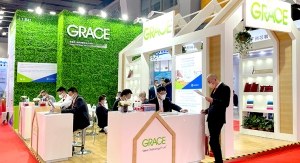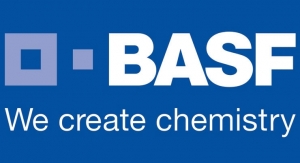Catherine Diamond, Associate Editor12.28.16
The global market size of coating additives is expected to reach $9.19 billion by 2021, according to market research firm MarketsandMarkets. Globally, the market as a whole is expected to register a CAGR of 6.1 percent during forecast period. In recent years, researchers found that the Asia-Pacific region dominated the coating additives market in terms of both volume and value. The increasing demand from the architecture, automobile, industrial, and wood and furniture industries in China, India, and Japan is driving the coating additives market.
The report - titled Coating Additives Market by Function (Rheology Modifiers, Dispersing, Wetting Agent, Impact Modifier, Anti-Foaming), Application (Automotive, Architecture, Industrial), Formulation (Water, Solvent, Powder Based), and Types - Global Trends & Forecasts to 2021- found that rheology modification function will dominate the coating additives market through 2021. Used to impart optimal fluidity and functionality to the surface, rheology modifying additives implemented to help better finishing of the coating surface, the report states.
“Waterborne formulations dominate the market among all the formulation types. With increasing environmental regulations, the market share of coating additives for solvent-borne system is decreasing. The demand is shifting toward the waterborne and powder-based coating additives due to stringent environmental regulations. However, solvent-borne is still being significantly used in Asia-Pacific and South America though its use has drastically reduced in Europe and North America,” researchers found.
“Architecture is the major application of coating additives. The growing commercial and residential construction in Asia-Pacific is driving the demand for coating additives for better protection of buildings. In addition, the growing automotive sector in regions such as Asia-Pacific and South America is catalyzing the demand for high-performance coating additives.”
Taking a closer look at the American market, Grand View Research recently published a report – Americas Coating Additives Market Analysis By Formulation (Waterborne, Solventborne, Powder), By Function (Rheology Modification, Biocide, Wetting & Dispersion, Antifoaming, Impact Modification, Flow, De-Waxing), By Product (Acrylic, Urethane, Fluoropolymers, Metallic, Alkoxylates), By End-Use (Automotive, Architecture, Industrial, Wood & Furniture) And Segment Forecast To 2024 – which determined that the American coatings additives market size exceeded $1.60 billion in 2015. A rapid expansion in the infrastructure and the automobile industries has led to significant demand for the protective enamels in the region.
Researchers found that the renovation and restoration of old architectures have gained momentum in most of the economies in the region over the past few years.
“Several new constructions and mega infrastructure projects have also been sanctioned over the past few years especially in the U.S., Canada, Brazil, and Argentina. This factor is anticipated to lead to a higher usage of coatings, thereby creating a sustained demand for the additives in the construction sector in the region,” the report stated.
“Countries including the U.S. and Canada are focusing on green construction since the past few years, and the trend is expected to continue in the near future. The industry has witnessed a shift in consumer trends regarding reducing reliance on petrochemical-based additives to moderate volatile organic contents (VOC) emissions. This has led to high rate of penetration of waterborne formulations across various architectural and industrial applications especially in mature economies of Canada and the U.S.”
Grand View Research found that the majority of these condiments are mostly derived from petrochemicals, except for some such as cellulose and vegetable oil. “The low crude oil prices from the last few years have positively impacted the market and will continue to be so till the prices get stabilized, researchers determined,” researchers stated.
New product and technologies innovation, such as the powder-based formulations and acrylic-based primers, is expected to penetrate the customer base in the near future. Technological advancements, moderate pricing, and diverse product portfolio are anticipated to be the major factors driving the industry over the foreseeable future.
Rising health awareness and the existence of inflexible policies over VOC content in the region have forced the formulators to either use additives that help reduce the content of volatile organic compounds or to shift to waterborne formulations.
“The high requirement for bio-degradable and environment-friendly coating additives with enhanced durability and performance is expected to drive the industry growth in the region,” researchers found.
“Constant innovations and development of bio-degradable agents with multiple functions are expected to remain one of the major buying criteria for these products. Additionally, long-term contracts with domestic suppliers or manufacturers may help in tackling volatile pricing and uninterrupted supply.”
Market growth, raw material costs
Echoing some of the aforementioned research findings, David S. Grabacki, president of Keim Additec Surface USA, said that “from our perspective and regarding the materials we are producing in our group, which include solid and water based wax additives, also non-wax-based specialty coating additives, we see the coatings market in Europe at a stable level, while there is in North America and several Asian countries still an increasing demand for high quality coatings additives.”
Shailesh Shah, Ph.D, global strategic marketing- formulation additives at BASF, believes that in 2016, the additives market grew globally with greater growth in water-based applications. He expects the modest growth to continue for 2017.
“Many of the same raw materials are found in resins, dispersions and additives,” Shah said. “Since additives are not the main cost contributors in a coating, the market is not dependent on fluctuations in the raw material costs, but on growth of the underlying coatings market.”
ANGUS Chemical Company saw good growth in 2016, particularly of its nitroalkane-based additives, which provide value-enhanced multifunctional performance to architectural coatings.
Kent Alexander, business development leader, North America industrial specialties at ANGUS, said that in addition to paints and coatings, ANGUS’ specialty additive and fine chemicals are also used in life sciences, metalworking fluids, personal care, pharmaceuticals and other applications. “We see opportunity for growth in 2017 as formulators continue to upgrade their low- and no-VOC paint formulations to meet increasing regulatory requirements and satisfy consumer preferences,” Alexander added.
Eastman Chemical Company’s Jami Arrowsmith, architectural coatings business manager, pointed out that additives are used for specific functions and typically at low levels in a formulation. “Even at low levels,” Arrowsmith said, “additives address key issues and improve critical properties of the final formulated product for its given application. Pricing is typically based on added value and not determined by input raw materials, so inherently, additives are less influenced by raw material pricing. Additives pricing is typically more stable and slower to move up or down based on changes in underlying feedstock costs.”
Making the right choice
When considering an additive, formulators have to balance many factors. Functionality, sustainability, customer needs – the list is as varied and multifaceted as customers themselves. Grabacki, of Keim, said that it is “critical that the additive manufacture have a comprehensive understanding of the application, system and intended result before an additive can be recommended.
“An additive is just that, an additive,” he said. “Additives alone cannot overcome deficiencies with other basic raw materials. That being said, when incorporated properly, additives can and do have a profound impact on the overall performance of a coating.”
BASF’s Shah said that formulators are most likely to consider the choice of new additives when designing new coatings, for regulatory compliance or market differentiation, and sometimes to solve a problem with an existing product line.
“We ask formulators to consider not only performance of an additive, which is necessary, but also long term sustainability,” he said. “At BASF, we believe that new additives should offer, not only performance and sustainability attributes, but also allow for complexity reduction, improvement in paint production or enhancement of raw material utilization. Other considerations include how well an additive works with specific new binder technologies and pigments.”
Tom Hall, BASF’s market segment manager – industrial coatings, added that the challenge for formulators, when selecting the additive package for their coating system, is identifying the performance attributes that are critical to the specific application of the coating.
“The resin and additive package must be optimized to achieve these performance targets,” he said. “At BASF, we have a global technical team called Formulation Service Institute that focuses on developing formulations with our additives and resins to optimize these combinations and meet specific customer performance targets. The results of our formulation work are then made available to our customers and allows them to quickly adjust their coating formulations to meet the needs of their respective markets. The formulation work at BASF fosters communication with our customers to identify future market needs and trends. This open dialogue guides the development of new, sustainable formulation solutions for our customers.”
Shah added that BASF has focused on improving defoamers for waterborne food contact applications and for improving appearance of 100% solids coatings. “In addition, we have been actively developing dispersants that make very low VOC colorants possible while addressing revised product labeling requirements globally.”
Eastman Chemical Company’s Steve Willoughby, global market segment leader, coatings, said that formulating a coating is simply about balance.
“Formulators can encounter challenges while trying to simultaneously balance multiple factors: costs, regulations, sustainability, performance, and productivity,” he said. “Every ingredient in a coating can impact several of these factors at the same time, so finding additives that address priority needs while simultaneously limiting their impact to factors that should remain constant is desired. We encourage formulators to interact with our technical team when considering how to best balance the factors that impact coatings performance and ultimately, additive selection. For example, in applications such as automotive and industrial coatings, formulators are looking to achieve improved appearance, durability, energy use, and layer reduction with lower VOC formulations. In this case, Eastman Tetrashield protective resin systems would be able to address multiple factors.”
Eastman Tetrashield protective resin systems are the latest product offering from Eastman, Willoughby said. “Tetrashield resins provide superior protection by combining polyester-based benefits such as flexibility, with the weathering, hardness and durability benefits typically found in other polymer systems such as acrylics. The unique composition of Tetrashield allows paint formulators to achieve higher glass transition temperatures (Tg) at lower viscosity. This can enable a reduction of volatile organic compounds (VOC) by up to 10-15% in depending on the formulation. The higher Tg can also enable superior scratch and mar resistance. Tetrashield protective resin systems are designed for a full range of coatings end uses where ultimate durability and protection is desired, and these resins are currently adding benefits to automotive and industrial applications.”
Another recent introduction to this market from Troy Corp. is New Troysperse ZWD3 dispersant, which has been engineered for formulators who require excellent color development capabilities, high pigment loadings, and fast dispersion time. It is a 98% active aqueous pigment dispersant developed for use with carbon black pigments in high-end as well as low-cost utility applications. Troysperse ZWD3 is also effective in phthalocyanine and organic pigments, which adds an element of universality, making the product an option for manufacturers wishing to keep one dispersant in inventory for multiple systems. The additive has a low VOC composition.
“Troysperse ZWD3 promotes excellent color development, as well as providing excellent dispersion stability,” says Shiona Stewart, Global Business Director, Performance Additives. “The advanced additive offers performance at very low use levels and incorporates multifunctionality, enabling formulators to achieve excellent cost performance.”
Shenton King, director of marketing for King Industries, said that the main factors to consider when choosing an additive are quality, performance, efficiency, and sustainability.
Additionally, King said, the technical service capabilities of the additive supplier should be considered.
“Choosing a high quality manufacturer of additives to supply your business is of critical importance,” King said. “Not only does it guarantee performance, but it guarantees high quality production processes with emphasis on excellent environmental and safety & health practices, ensuring stability and sustainability.
Moving forward, King said the demand of low-VOC coatings has required the paint and coatings market to develop more environmentally friendly additives that achieve lower VOC while still maintaining high performance properties.
“King Industries has responded to this demand with K-FLEX resin modifiers, which has allowed major manufacturers to formulate zero-VOC and low-VOC paints and coatings.
“Additionally, increasing regulatory restrictions of harmful tin additives, especially in Europe, has forced coatings formulators to look for alternatives to tin catalysts. King has stayed ahead of this trend and we have an established line of non-tin, EHA-free K-KAT catalysts,” he said.
The report - titled Coating Additives Market by Function (Rheology Modifiers, Dispersing, Wetting Agent, Impact Modifier, Anti-Foaming), Application (Automotive, Architecture, Industrial), Formulation (Water, Solvent, Powder Based), and Types - Global Trends & Forecasts to 2021- found that rheology modification function will dominate the coating additives market through 2021. Used to impart optimal fluidity and functionality to the surface, rheology modifying additives implemented to help better finishing of the coating surface, the report states.
“Waterborne formulations dominate the market among all the formulation types. With increasing environmental regulations, the market share of coating additives for solvent-borne system is decreasing. The demand is shifting toward the waterborne and powder-based coating additives due to stringent environmental regulations. However, solvent-borne is still being significantly used in Asia-Pacific and South America though its use has drastically reduced in Europe and North America,” researchers found.
“Architecture is the major application of coating additives. The growing commercial and residential construction in Asia-Pacific is driving the demand for coating additives for better protection of buildings. In addition, the growing automotive sector in regions such as Asia-Pacific and South America is catalyzing the demand for high-performance coating additives.”
Taking a closer look at the American market, Grand View Research recently published a report – Americas Coating Additives Market Analysis By Formulation (Waterborne, Solventborne, Powder), By Function (Rheology Modification, Biocide, Wetting & Dispersion, Antifoaming, Impact Modification, Flow, De-Waxing), By Product (Acrylic, Urethane, Fluoropolymers, Metallic, Alkoxylates), By End-Use (Automotive, Architecture, Industrial, Wood & Furniture) And Segment Forecast To 2024 – which determined that the American coatings additives market size exceeded $1.60 billion in 2015. A rapid expansion in the infrastructure and the automobile industries has led to significant demand for the protective enamels in the region.
Researchers found that the renovation and restoration of old architectures have gained momentum in most of the economies in the region over the past few years.
“Several new constructions and mega infrastructure projects have also been sanctioned over the past few years especially in the U.S., Canada, Brazil, and Argentina. This factor is anticipated to lead to a higher usage of coatings, thereby creating a sustained demand for the additives in the construction sector in the region,” the report stated.
“Countries including the U.S. and Canada are focusing on green construction since the past few years, and the trend is expected to continue in the near future. The industry has witnessed a shift in consumer trends regarding reducing reliance on petrochemical-based additives to moderate volatile organic contents (VOC) emissions. This has led to high rate of penetration of waterborne formulations across various architectural and industrial applications especially in mature economies of Canada and the U.S.”
Grand View Research found that the majority of these condiments are mostly derived from petrochemicals, except for some such as cellulose and vegetable oil. “The low crude oil prices from the last few years have positively impacted the market and will continue to be so till the prices get stabilized, researchers determined,” researchers stated.
New product and technologies innovation, such as the powder-based formulations and acrylic-based primers, is expected to penetrate the customer base in the near future. Technological advancements, moderate pricing, and diverse product portfolio are anticipated to be the major factors driving the industry over the foreseeable future.
Rising health awareness and the existence of inflexible policies over VOC content in the region have forced the formulators to either use additives that help reduce the content of volatile organic compounds or to shift to waterborne formulations.
“The high requirement for bio-degradable and environment-friendly coating additives with enhanced durability and performance is expected to drive the industry growth in the region,” researchers found.
“Constant innovations and development of bio-degradable agents with multiple functions are expected to remain one of the major buying criteria for these products. Additionally, long-term contracts with domestic suppliers or manufacturers may help in tackling volatile pricing and uninterrupted supply.”
Market growth, raw material costs
Echoing some of the aforementioned research findings, David S. Grabacki, president of Keim Additec Surface USA, said that “from our perspective and regarding the materials we are producing in our group, which include solid and water based wax additives, also non-wax-based specialty coating additives, we see the coatings market in Europe at a stable level, while there is in North America and several Asian countries still an increasing demand for high quality coatings additives.”
Shailesh Shah, Ph.D, global strategic marketing- formulation additives at BASF, believes that in 2016, the additives market grew globally with greater growth in water-based applications. He expects the modest growth to continue for 2017.
“Many of the same raw materials are found in resins, dispersions and additives,” Shah said. “Since additives are not the main cost contributors in a coating, the market is not dependent on fluctuations in the raw material costs, but on growth of the underlying coatings market.”
ANGUS Chemical Company saw good growth in 2016, particularly of its nitroalkane-based additives, which provide value-enhanced multifunctional performance to architectural coatings.
Kent Alexander, business development leader, North America industrial specialties at ANGUS, said that in addition to paints and coatings, ANGUS’ specialty additive and fine chemicals are also used in life sciences, metalworking fluids, personal care, pharmaceuticals and other applications. “We see opportunity for growth in 2017 as formulators continue to upgrade their low- and no-VOC paint formulations to meet increasing regulatory requirements and satisfy consumer preferences,” Alexander added.
Eastman Chemical Company’s Jami Arrowsmith, architectural coatings business manager, pointed out that additives are used for specific functions and typically at low levels in a formulation. “Even at low levels,” Arrowsmith said, “additives address key issues and improve critical properties of the final formulated product for its given application. Pricing is typically based on added value and not determined by input raw materials, so inherently, additives are less influenced by raw material pricing. Additives pricing is typically more stable and slower to move up or down based on changes in underlying feedstock costs.”
Making the right choice
When considering an additive, formulators have to balance many factors. Functionality, sustainability, customer needs – the list is as varied and multifaceted as customers themselves. Grabacki, of Keim, said that it is “critical that the additive manufacture have a comprehensive understanding of the application, system and intended result before an additive can be recommended.
“An additive is just that, an additive,” he said. “Additives alone cannot overcome deficiencies with other basic raw materials. That being said, when incorporated properly, additives can and do have a profound impact on the overall performance of a coating.”
BASF’s Shah said that formulators are most likely to consider the choice of new additives when designing new coatings, for regulatory compliance or market differentiation, and sometimes to solve a problem with an existing product line.
“We ask formulators to consider not only performance of an additive, which is necessary, but also long term sustainability,” he said. “At BASF, we believe that new additives should offer, not only performance and sustainability attributes, but also allow for complexity reduction, improvement in paint production or enhancement of raw material utilization. Other considerations include how well an additive works with specific new binder technologies and pigments.”
Tom Hall, BASF’s market segment manager – industrial coatings, added that the challenge for formulators, when selecting the additive package for their coating system, is identifying the performance attributes that are critical to the specific application of the coating.
“The resin and additive package must be optimized to achieve these performance targets,” he said. “At BASF, we have a global technical team called Formulation Service Institute that focuses on developing formulations with our additives and resins to optimize these combinations and meet specific customer performance targets. The results of our formulation work are then made available to our customers and allows them to quickly adjust their coating formulations to meet the needs of their respective markets. The formulation work at BASF fosters communication with our customers to identify future market needs and trends. This open dialogue guides the development of new, sustainable formulation solutions for our customers.”
Shah added that BASF has focused on improving defoamers for waterborne food contact applications and for improving appearance of 100% solids coatings. “In addition, we have been actively developing dispersants that make very low VOC colorants possible while addressing revised product labeling requirements globally.”
Eastman Chemical Company’s Steve Willoughby, global market segment leader, coatings, said that formulating a coating is simply about balance.
“Formulators can encounter challenges while trying to simultaneously balance multiple factors: costs, regulations, sustainability, performance, and productivity,” he said. “Every ingredient in a coating can impact several of these factors at the same time, so finding additives that address priority needs while simultaneously limiting their impact to factors that should remain constant is desired. We encourage formulators to interact with our technical team when considering how to best balance the factors that impact coatings performance and ultimately, additive selection. For example, in applications such as automotive and industrial coatings, formulators are looking to achieve improved appearance, durability, energy use, and layer reduction with lower VOC formulations. In this case, Eastman Tetrashield protective resin systems would be able to address multiple factors.”
Eastman Tetrashield protective resin systems are the latest product offering from Eastman, Willoughby said. “Tetrashield resins provide superior protection by combining polyester-based benefits such as flexibility, with the weathering, hardness and durability benefits typically found in other polymer systems such as acrylics. The unique composition of Tetrashield allows paint formulators to achieve higher glass transition temperatures (Tg) at lower viscosity. This can enable a reduction of volatile organic compounds (VOC) by up to 10-15% in depending on the formulation. The higher Tg can also enable superior scratch and mar resistance. Tetrashield protective resin systems are designed for a full range of coatings end uses where ultimate durability and protection is desired, and these resins are currently adding benefits to automotive and industrial applications.”
Another recent introduction to this market from Troy Corp. is New Troysperse ZWD3 dispersant, which has been engineered for formulators who require excellent color development capabilities, high pigment loadings, and fast dispersion time. It is a 98% active aqueous pigment dispersant developed for use with carbon black pigments in high-end as well as low-cost utility applications. Troysperse ZWD3 is also effective in phthalocyanine and organic pigments, which adds an element of universality, making the product an option for manufacturers wishing to keep one dispersant in inventory for multiple systems. The additive has a low VOC composition.
“Troysperse ZWD3 promotes excellent color development, as well as providing excellent dispersion stability,” says Shiona Stewart, Global Business Director, Performance Additives. “The advanced additive offers performance at very low use levels and incorporates multifunctionality, enabling formulators to achieve excellent cost performance.”
Shenton King, director of marketing for King Industries, said that the main factors to consider when choosing an additive are quality, performance, efficiency, and sustainability.
Additionally, King said, the technical service capabilities of the additive supplier should be considered.
“Choosing a high quality manufacturer of additives to supply your business is of critical importance,” King said. “Not only does it guarantee performance, but it guarantees high quality production processes with emphasis on excellent environmental and safety & health practices, ensuring stability and sustainability.
Moving forward, King said the demand of low-VOC coatings has required the paint and coatings market to develop more environmentally friendly additives that achieve lower VOC while still maintaining high performance properties.
“King Industries has responded to this demand with K-FLEX resin modifiers, which has allowed major manufacturers to formulate zero-VOC and low-VOC paints and coatings.
“Additionally, increasing regulatory restrictions of harmful tin additives, especially in Europe, has forced coatings formulators to look for alternatives to tin catalysts. King has stayed ahead of this trend and we have an established line of non-tin, EHA-free K-KAT catalysts,” he said.

